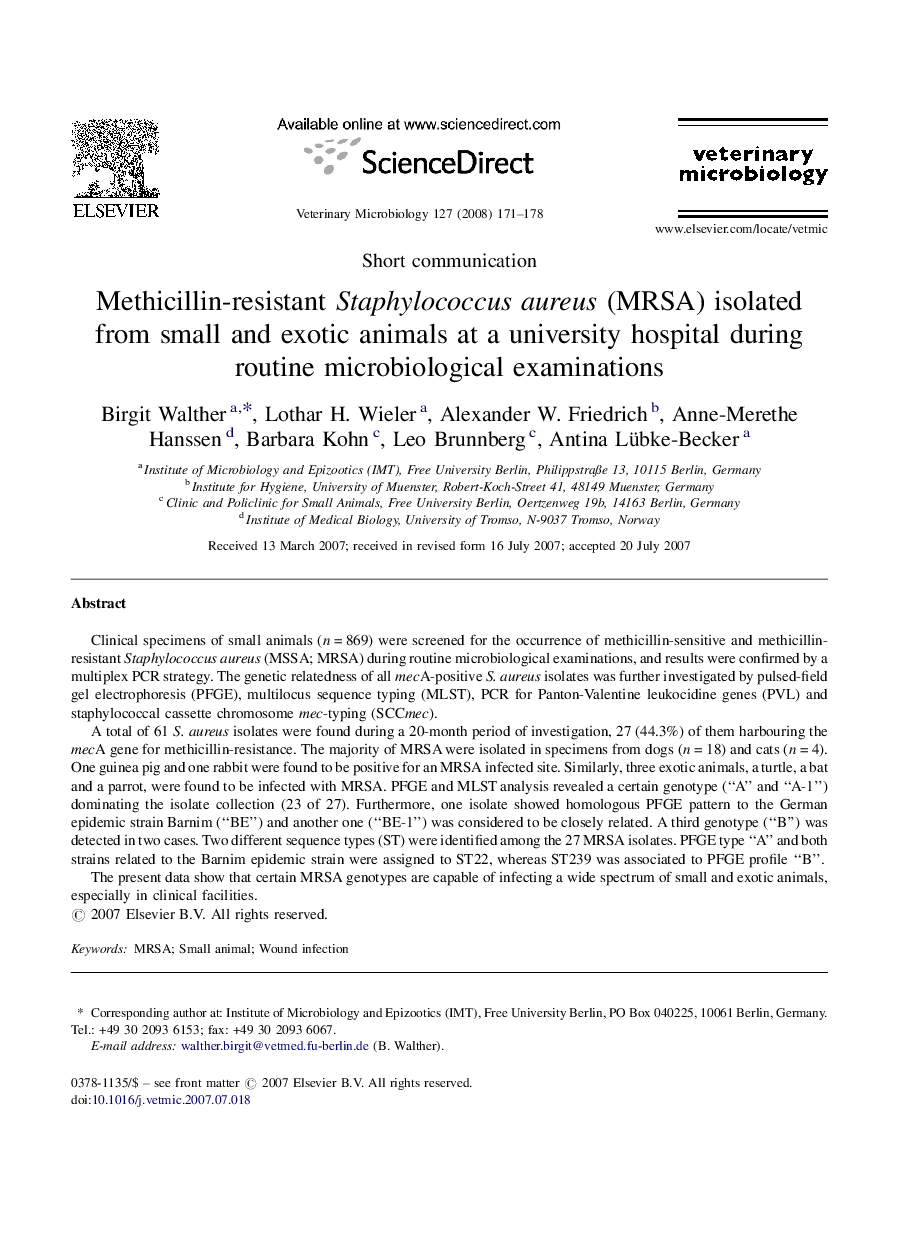| Article ID | Journal | Published Year | Pages | File Type |
|---|---|---|---|---|
| 2468906 | Veterinary Microbiology | 2008 | 8 Pages |
Clinical specimens of small animals (n = 869) were screened for the occurrence of methicillin-sensitive and methicillin-resistant Staphylococcus aureus (MSSA; MRSA) during routine microbiological examinations, and results were confirmed by a multiplex PCR strategy. The genetic relatedness of all mecA-positive S. aureus isolates was further investigated by pulsed-field gel electrophoresis (PFGE), multilocus sequence typing (MLST), PCR for Panton-Valentine leukocidine genes (PVL) and staphylococcal cassette chromosome mec-typing (SCCmec).A total of 61 S. aureus isolates were found during a 20-month period of investigation, 27 (44.3%) of them harbouring the mecA gene for methicillin-resistance. The majority of MRSA were isolated in specimens from dogs (n = 18) and cats (n = 4). One guinea pig and one rabbit were found to be positive for an MRSA infected site. Similarly, three exotic animals, a turtle, a bat and a parrot, were found to be infected with MRSA. PFGE and MLST analysis revealed a certain genotype (“A” and “A-1”) dominating the isolate collection (23 of 27). Furthermore, one isolate showed homologous PFGE pattern to the German epidemic strain Barnim (“BE”) and another one (“BE-1”) was considered to be closely related. A third genotype (“B”) was detected in two cases. Two different sequence types (ST) were identified among the 27 MRSA isolates. PFGE type “A” and both strains related to the Barnim epidemic strain were assigned to ST22, whereas ST239 was associated to PFGE profile “B”.The present data show that certain MRSA genotypes are capable of infecting a wide spectrum of small and exotic animals, especially in clinical facilities.
